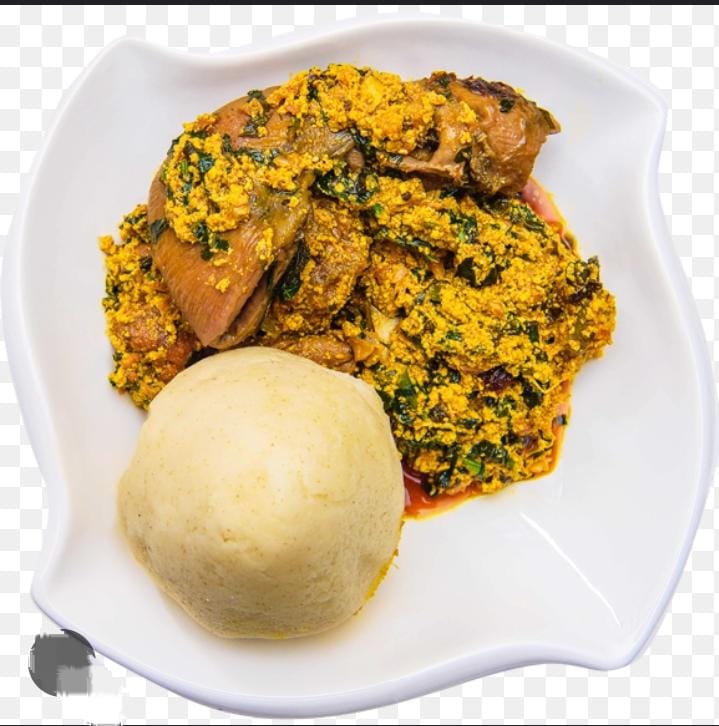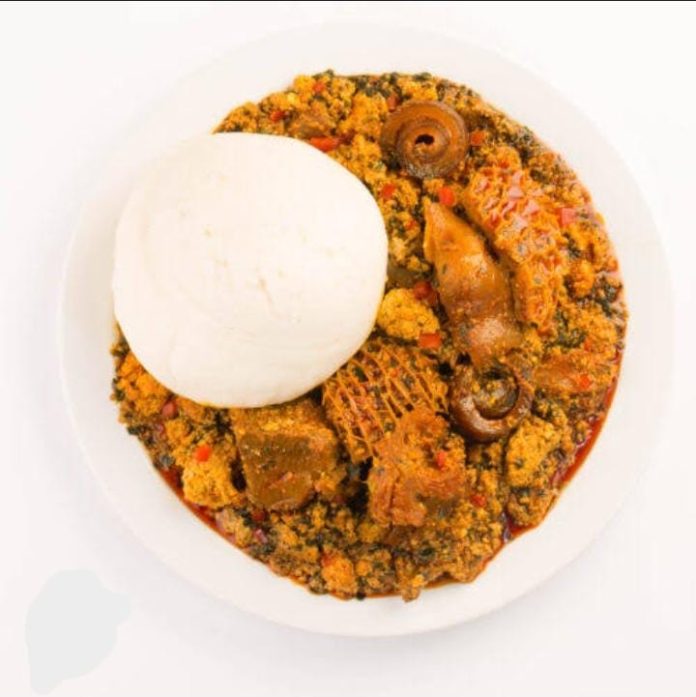Table of Contents
Embarking on a culinary journey to create the perfect Semo and Egusi Soup is not just about following a recipe; it’s about embracing the rich tapestry of Nigerian cuisine and the cultural heritage it represents. This traditional West African dish embodies a harmonious blend of flavors and textures, inviting both the novice cook and the seasoned chef to explore the depths of its savory delights.
Semo, a versatile staple made from semolina flour, serves as the perfect canvas for the robust flavors of Egusi Soup. This hearty soup, made from ground melon seeds and an array of aromatic spices, showcases the vibrant diversity of Nigerian ingredients while offering a comforting embrace reminiscent of home-cooked meals shared with loved ones.
In this guide, we’ll embark on a culinary adventure to uncover the secrets of crafting the ultimate Semo and Egusi Soup. From selecting the freshest ingredients to mastering the art of seasoning, each step in the process is infused with tradition and passion, culminating in a dish that not only nourishes the body but also feeds the soul.
So, whether you’re a newcomer to Nigerian cuisine or a seasoned aficionado looking to perfect your culinary skills, join me as we delve into the heart and soul of Semo and Egusi Soup, and discover the joy of creating this beloved West African delicacy in your own kitchen.
Egusi soup and Semo step by step
Ingredients:
– 2 cups of egusi (melon) seeds
– 500g of assorted meat (beef, goat meat, or chicken)
– 1 medium-sized onion, chopped
– 2-3 cups of chopped vegetables (spinach, ugu leaves, or bitter leaf)
– 2-3 tablespoons of palm oil
– 2-3 tablespoons of ground crayfish
– 2-3 stock cubes
– Salt and pepper to taste
– Optional: dried fish or stockfish (pre-soaked and deboned)
Instructions:

1. Start by preparing the egusi seeds. You can either buy them pre-ground or grind them yourself. If grinding yourself, use a dry mill or blender to grind the egusi seeds until smooth. Set aside.
2. In a large pot, heat the palm oil over medium heat. Add the chopped onions and sauté until they become translucent and fragrant.
3. Add the assorted meat to the pot and cook until it is browned on all sides. You can use beef, goat meat, or chicken, or a combination of these meats. If you prefer, you can also add dried fish or stockfish at this point. Make sure to soak and debone the dried fish or stockfish before adding them to the pot.
4. Once the meat is browned, add the ground crayfish, stock cubes, salt, and pepper to the pot. Stir well to combine the ingredients and distribute the flavors.
5. Now it’s time to add the ground egusi to the pot. Gradually sprinkle the ground egusi into the pot while stirring continuously. This will help prevent lumps from forming. Keep stirring for about 5 minutes to ensure that the egusi is well incorporated into the soup.
6. Gradually add water to the pot, stirring continuously, until you achieve your desired consistency. The egusi soup should be thick but not too thick. The amount of water needed will depend on your preference and the quantity of egusi used.
7. Cover the pot and let the egusi soup simmer for about 20-30 minutes. This will allow the egusi to cook fully and the flavors to meld together. Stir occasionally to prevent the soup from sticking to the bottom of the pot.
8. After simmering, add the chopped vegetables to the pot. You can use spinach, ugu leaves, or bitter leaf, or a combination of these vegetables. Stir well to incorporate the vegetables into the soup.
9. Cook the egusi soup for an additional 5 minutes, or until the vegetables are tender. Be careful not to overcook the vegetables, as they should still retain some of their vibrant color and texture.
10. Taste the egusi soup and adjust the seasoning if needed. Add more salt, pepper, or stock cubes according to your taste preferences.
11. Once the egusi soup is ready, serve it hot with your choice of swallow. Popular options include pounded yam, eba, or fufu. The thick and flavorful egusi soup pairs well with these traditional Nigerian staples. For this recipe, we are going to prepare semo to eat with it.
What Are the Top 5 Healthy Nigerian Food
How to make semo:
To make semo, a popular Nigerian swallow made from semolina flour, follow these steps:
Ingredients:
– 2 cups of semolina flour
– Water
Beans Porridge : Great 5 Ways To Cook Beans Porridge
Instructions:

1. Measure out 2 cups of semolina flour and place it in a clean, dry bowl.
2. Gradually add water to the semolina flour while stirring continuously. The amount of water needed will depend on the brand of semolina flour and your desired consistency. Start by adding small amounts of water and gradually increase until you achieve a thick, smooth paste.
3. Once the water is added, use your hand or a wooden spoon to mix the semolina flour and water together. Stir vigorously to ensure that there are no lumps in the mixture.
4. Continue stirring the mixture until it becomes a smooth, stretchy dough. The dough should be firm and elastic, similar to a bread dough.
5. Once the dough is formed, cover the bowl with a clean kitchen towel or plastic wrap and let it rest for about 10-15 minutes. This resting period allows the semolina to absorb the water and become more pliable.
6. After the resting period, divide the dough into smaller portions. Roll each portion into a smooth ball using your hands.
7. Fill a large pot with water and bring it to a boil. Once the water is boiling, carefully drop the semo balls into the pot.
8. Allow the semo balls to cook in the boiling water for about 5-7 minutes, or until they float to the surface. This indicates that the semo is cooked and ready to be served.
9. Using a slotted spoon or a sieve, remove the cooked semo balls from the pot and transfer them to a colander to drain excess water.
10. Serve the cooked semo balls hot with your choice of soup or stew. Semo is typically enjoyed with Nigerian soups such as egusi soup, vegetable soup, or okra soup.
Semo can be quite hot when cooked, so be careful when handling and serving. It is best to use a spoon or fork to break off small portions of the semo and dip it into the soup or stew.
Enjoy your homemade semo with a delicious Nigerian soup!
Enjoy your homemade egusi soup, packed with the rich flavors of egusi seeds, assorted meats, and vegetables!





















